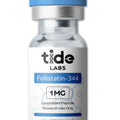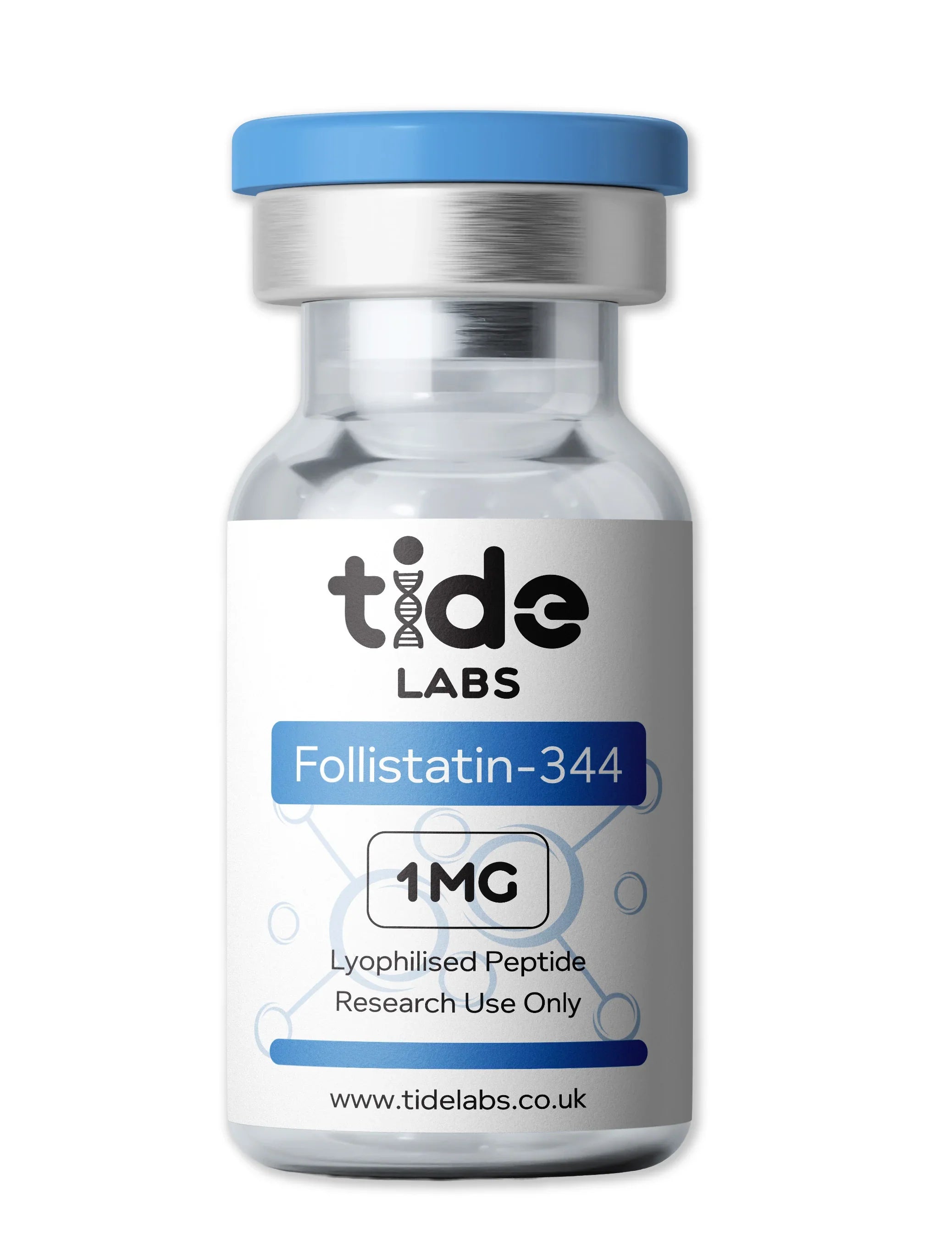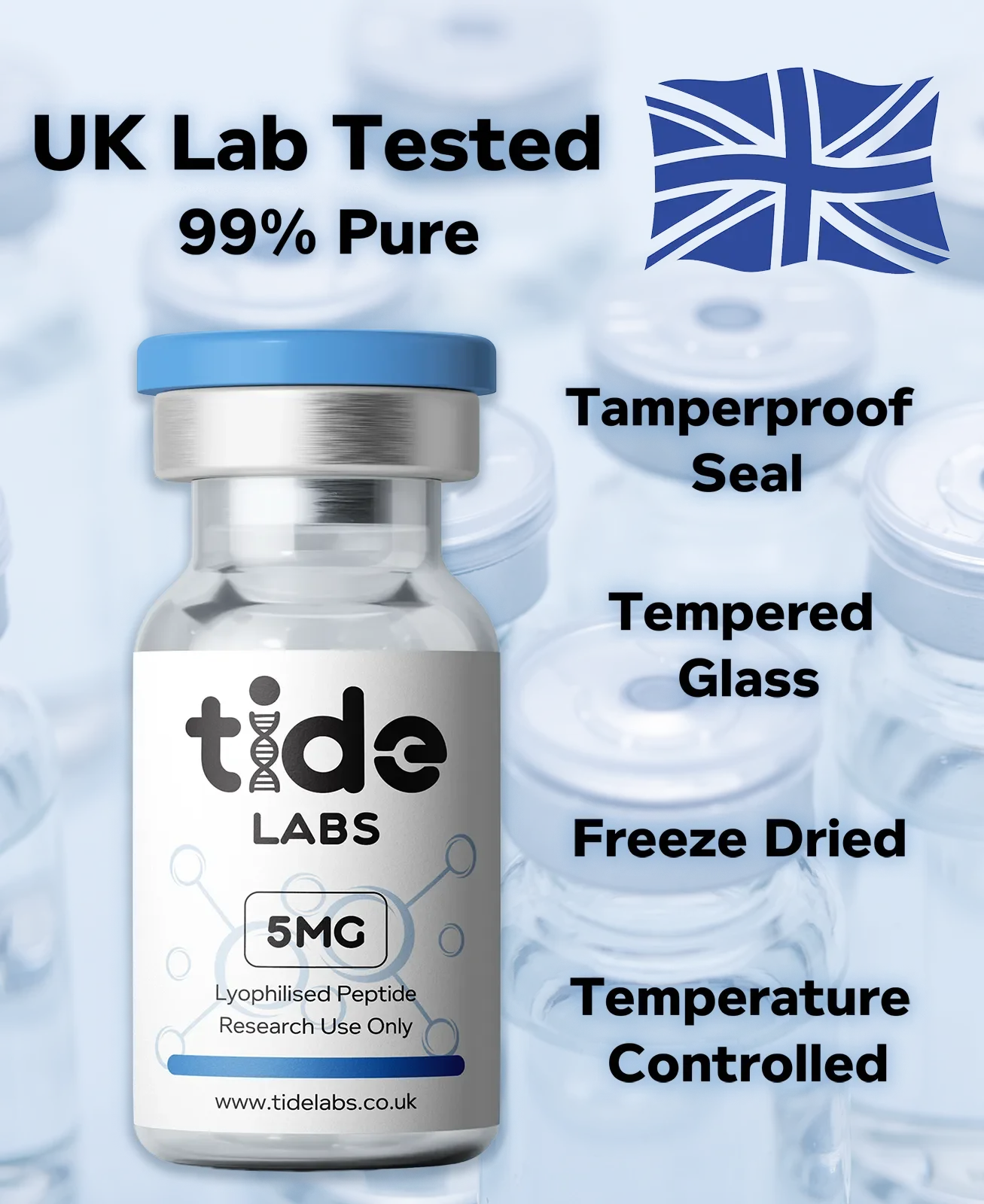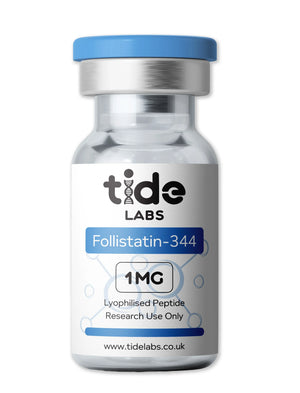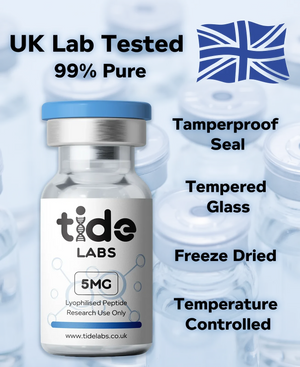Follistatin-344
Follistatin-344 is a synthetic research peptide derived from the naturally occurring protein follistatin, a glycoprotein first identified for its ability to bind and inhibit members of the TGF-β superfamily such as activin and myostatin. In research settings, Follistatin-344 has attracted strong interest for its potential influence on muscle development, tissue regeneration, and metabolic pathways. It is not approved for human or veterinary use but remains a significant focus of laboratory studies.
Area of Interest
Laboratory research into Follistatin-344 has explored several promising areas:
- Myostatin Inhibition: Studied for its ability to bind and inhibit myostatin, a regulator that normally limits skeletal muscle growth.
- Muscle Hypertrophy Models: Preclinical studies have examined its role in promoting increased muscle mass in animal models.
- Tissue Regeneration: Investigated for potential support in regeneration of damaged tissue, including musculoskeletal and metabolic research applications.
- Metabolic Studies: Explored for possible effects on glucose regulation and lipid metabolism pathways.
These areas make Follistatin-344 an exciting and widely discussed peptide within the research community, especially in the context of muscle and regenerative biology.
Technical Information
- Chemical Name: Follistatin-344
- Synonyms: FST-344, Activin-binding protein
- Molecular Formula: C₁₅₆₅H₂₄₉₀N₄₆₀O₄₅₂S₁₀
- Molecular Weight: ~38.7 kDa
- Sequence (Amino Acid): Full-length sequence of 344 amino acids (commonly truncated for research use)
- CAS Number: 80449-31-6
- Peptide Classification: Recombinant human protein fragment (glycoprotein)
Storage Guidelines
- Lyophilized peptide is stable at room temperature for short periods.
- For long-term storage, keep at −20 °C or below.
- Once reconstituted, store at 2–8 °C. Effective use period may vary depending on the solution used.
Solubility
Follistatin-344 is soluble in sterile water, acetic acid, or aqueous buffers, depending on formulation and purity.
References
- Lee, S. J., & McPherron, A. C. (2001). “Regulation of myostatin activity and muscle growth.” Proceedings of the National Academy of Sciences, 98(16), 9306–9311. https://doi.org/10.1073/pnas.151270098
- Gilson, H., Schakman, O., Kalista, S., et al. (2009). “Follistatin induces muscle hypertrophy through satellite cell proliferation.” Cell Proliferation, 42(6), 871–880. https://doi.org/10.1111/j.1365-2184.2009.00643.x
- Haidet, A. M., Rizo, L., Handy, C., et al. (2008). “Long-term enhancement of skeletal muscle mass and strength by single gene administration of myostatin inhibitors.” Proceedings of the National Academy of Sciences, 105(11), 4318–4322. https://doi.org/10.1073/pnas.0800290105
Certificate of Analysis (COA): Available here
